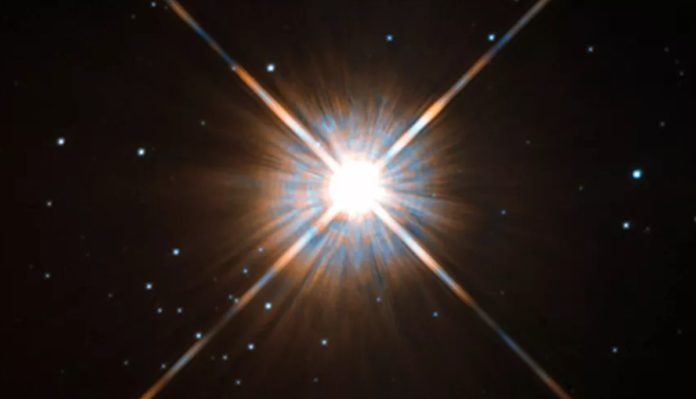Astronomers have demonstrated for the first time a clear relationship between optical flares and radio bursts in red dwarfs, and have shown that they experience the same flares as the Sun. The discovery in the future will allow better study of the behavior of stars such as Proxima Centauri, as well as an understanding of how habitable exoplanets orbiting them are.
Red dwarfs are small and relatively cold luminaries belonging to spectral class M. They are considered the most common type of stars in our galaxy and, in addition, Earth-like planets are often found around them – on average, according to the Kepler telescope, 1.2 for every red dwarf. Since such luminaries are dim enough to enter the habitable zone, exoplanets must be in orbits very close to stars. On the one hand, this makes them much easier to detect, and on the other hand, it can create unfavorable conditions on the surface of celestial bodies, since red dwarfs tend to experience frequent and powerful flares that can destroy life like earth. Nevertheless, these events are still insufficiently studied.
To better track space weather in distant stars, Andrew Zic of the University of Western Australia and his colleagues decided to draw a parallel between solar flares and flares on Proxima Centauri, the closest star to the Sun. In 2016, the exoplanet Proxima b was discovered next to it, which is located in a potentially habitable zone. In particular, astronomers were interested in type IV flares, since they are most often associated with coronal mass ejections – that is, ejections of accelerated plasma streams. They have specific features and are observed in the radio frequency range from 200 to two thousand megahertz.
Astronomers analyzed observations of Proxima Centauri made by the TESS and Zadko Observatory telescopes and found a powerful flare with an energy of 1.6 × 10 32erg. At the same time, before its beginning, the Australian Square Kilometre Array Pathfinder (ASKAP) telescope recorded a series of radio flares that were very similar to those that preceded large solar flares. The first of them occurred 42 seconds before the start of the optical flash.
The spectral and polarization properties of radio bursts make it possible to classify the flare at Proxima Centauri as type IV. This is the most accurate definition of a solar-like radio burst in another star to date. Given the fact that type IV flares are often associated with coronal mass ejections, the researchers suggest that a similar event probably occurred at the nearest star. However, in order to confirm this assumption, and also to understand how flares in red dwarfs can affect the planets orbiting around them, observations in the ultraviolet and X-ray ranges are necessary.
Astronomers have been discussing for years how the activity of red dwarfs can affect the viability of exoplanets. Previously, scientists have found that some flares on such stars can be 10 thousand times more powerful than those that occur on the Sun. In addition, superflares are observed on red dwarfs, which can seriously harm the atmospheres of the planets orbiting around them.
The article was published in The Astrophysical Journal.
